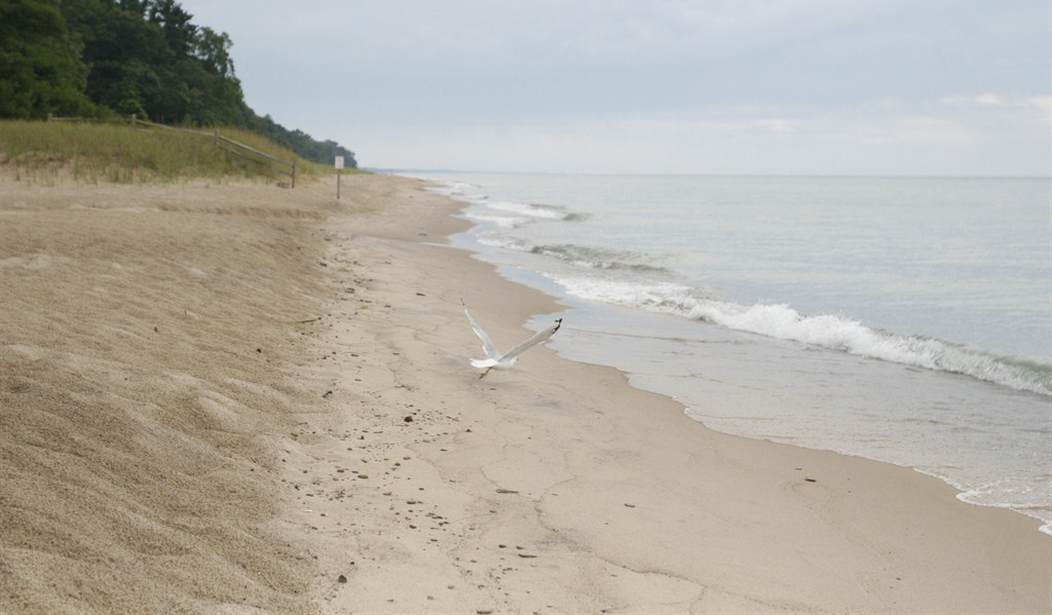According to contemporaneous Confederate accounts, Sherman's March to the Sea was a hideous form of "total war." Yankee savages -- particularly Sherman's engineers and foraging "bummers"-- were scorched-earth devils, burning Atlanta and then plundering the countryside.
Sherman was, in Southern eyes, a war criminal. Sherman anticipated and arguably stoked their rage. He stated his goal with brilliant bluntness: end the Civil War's slaughter with a Union victory. Slicing across Georgia was, in his estimation, a potentially war-winning stroke.
So much the better if this bold March to Savannah made "Georgia howl." The South started the war. High time Deep South aristocrats felt war's "Hell." Let the Southern newspapers snarl.
Sherman also argued that the civilian economy and military operations were intimately linked. When processed, a pig on a rural Georgia farm became salt pork for Robert E. Lee's Army of Northern Virginia.
The link between Georgia's civilian farms and Sherman's March to the Sea was intimate. Abandoning Atlanta's railhead and telegraph lines was a high-risk operation. Sherman's 60,000 soldiers would have to march quickly. The less food they carried the faster they could move. Georgia's farms could feed his troops. Sherman's men could feast on the pig once destined to feed Lee's army.
Recommended
The March had other operational risks. Sherman's left wing (north) and right wing (south) would have open flanks. Upon reaching the coast, his forces would have to take Savannah. His troops would also have to seize Fort McAllister, which blocked the port's access to the Atlantic. Then the Union Navy could supply his men.
Remaining in Atlanta also entailed serious danger. For supplies, Sherman's troops depended on the single rail line connecting Atlanta to Chattanooga. On a daily basis, Confederate cavalry under Nathaniel Bedford Forrest snapped Union telegraph lines and ripped up railroad track. If Sherman tried to winter in the city, his army might starve.
Cutting his own supply line and living off Georgia was a calculated risk worth taking. In his memoirs, Sherman wrote that he consulted the 1860 U.S. Census and "a compilation" made by Georgia's state controller "for the purpose of taxation" to target rich counties and countryside.
Sherman had his medical officers cull out sick, weak and overweight soldiers. They were put on the next train to Chattanooga. The result: 60,000 lithe, armed athletes capable of sustaining a forced march pace.
On Nov. 9, Sherman issued Special Orders No. 120. The March would likely take a month. Units were to maintain 10 days worth of rations on supply wagons. Brigades would form "forage parties" to gather supplies en route. Corps commanders could decide to burn private property if their forces encountered guerrilla attacks.
On Nov. 15, 1864, first the right wing (XV and XVII Corps, commanded by Major-General O. O. Howard) and then the left wing (XIV and XX Corps, MG Henry Slocum) left Atlanta.
Confederate cavalry and returning Atlanta residents confirmed what smoke and explosive concussions had indicated. Northern engineers had blown up several buildings and industrial sites and torn apart the railroads. But the Yankee beasts -- they had set fires which burned homes and civilian stores. The Union engineer commander claimed that the massive fire was an accident.
Sherman contended his order was clear: thoroughly destroy every building and every piece of equipment that might be militarily valuable.
On Dec. 8, Sherman's forces neared Savannah. On Dec. 13, Fort McAllister fell to a quick assault. On Dec. 20, the Confederates evacuated Savannah.
After Savannah? Sherman and his commander, Ulysses S. Grant, had planned the next phase. Sherman would head north, through the Carolinas, while Grant kept Lee busy in Virginia.
When compared to other Civil War campaigns, combat during the March To The Sea was remarkably light. The Confederates' main forces, under General John Bell Hood, were in Tennessee, attempting to destroy Union railroads and capture Nashville. Hood's concept appeared sound. If he took Nashville, he could deny Sherman supplies -- if Sherman were still in Atlanta, depending on that single rail line from Chattanooga.
The casualty count was remarkably small. Sherman's soldiers faced skirmishers and snipers, but only four engagements appear as battles, and they were small (Griswoldville, Buck Head Creek, Waynesborough, Fort Mcallister). Union forces suffered around 500 casualties (dead and wounded); the Confederates, 1700.
Sherman's army ate rather well as it marched. Were some foragers, thieves? No doubt. But Total War? Sherman waged war for total psychological impact and hence political impact. If Southerners wanted to keep their pigs, they could surrender.
Twenty-first century war fighters might learn from his example.
























Join the conversation as a VIP Member